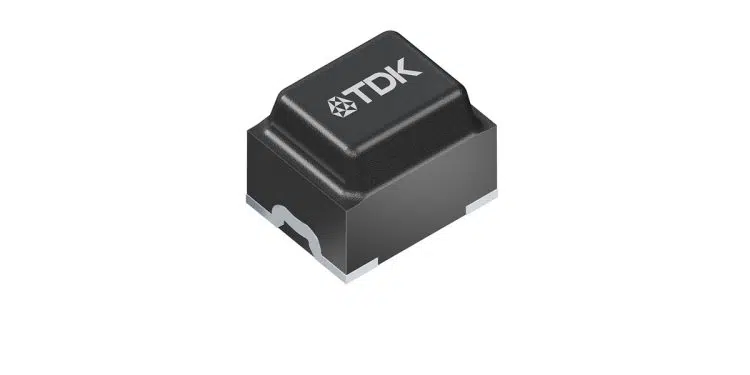TDK now offers extremely compact and reliable CLT power inductors for ADAS/AD automotive power management.
TDK Corporation presents the CLT32 series power inductors with extremely compact dimensions and excellent electrical values thanks to their new design.
The nine types cover an inductance range of 17 nH to 440 nH and are designed for 13.5 A to 60 A saturation currents. With a compact footprint of 3.2 x 2.5 mm and an insertion height of 2.5 mm, these are the most compact SMT power inductors in their performance class. They are constructed for a temperature range of -40 °C to 165 °C including self-heating.
These AEC-Q200 certified components are designed with a solid copper coil over-molded with a ferromagnetic plastic compound. The coil ends already function as terminals which significantly increases reliability – especially for automotive applications. Due to the solid copper coil, these products can achieve an exceptionally low RDC value, keeping losses to a minimum. The ohmic resistance is only 0.39 mΩ at an inductance value of 17 nH.
The compact and highly robust CLT32 inductors are ideal for use in safety-relevant automotive applications in ADAS/AD. High-performance processors used in these fields require currents in the double-digit ampere range. Power Management ICs (PMICs) are used as power supplies that provide these high currents. Here, power inductors for stabilization are key components at the outputs. The CLT32 series is designed for switching frequencies of up to 10 MHz and already meets future requirements placed on DC/DC converters with high clock rates.
Features
- Extremely compact size of 3.2 x 2.5 x 2.5 mm
- High saturation current of up to 60 A
- Operating temperature of up to 165 °C
- High reliability due to the innovative design without internal connections
- Extremely low RDC
- Certified according to AEC-Q200
- Suitable for switching frequencies up to 10 MHz
Applications
- PMICs for supplying high-performance processors for ADAS/AD
- DC/DC converters with high clock rates


































